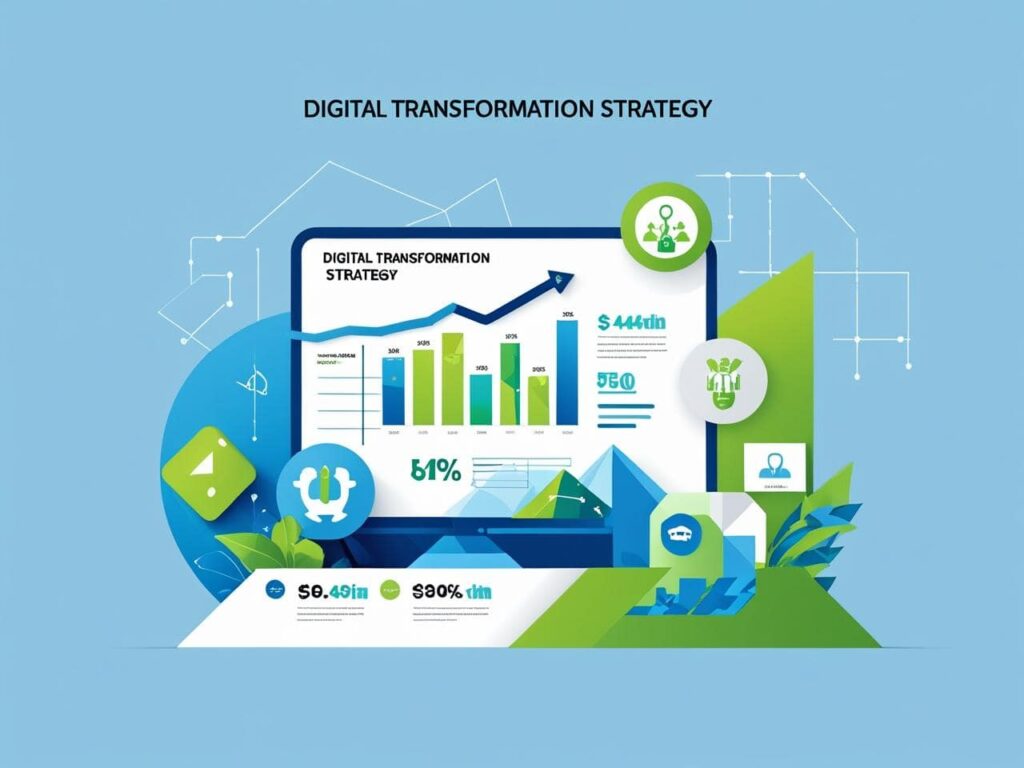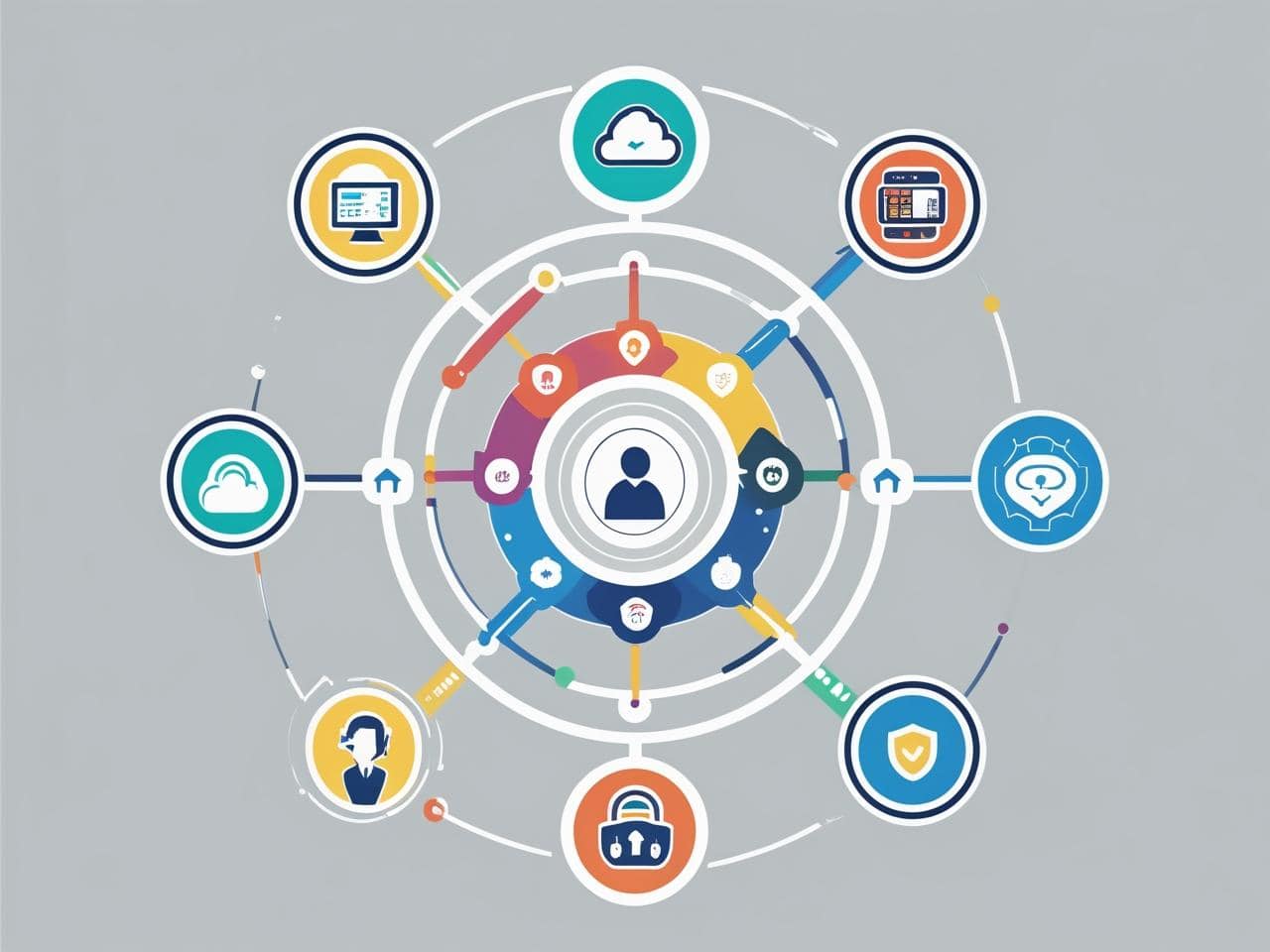Introduction: Why You Need A Digital Transformation Strategy
In today’s world, being online is not just something nice to have.. it’s something every business needs. Whether you’re a small startup or a big brand, having a clear and focused digital strategy is key to success. People search online before they buy, check reviews, follow brands on social media, and get recommendations from digital content. If people can’t find your business online, you’re losing customers.
A strong digital transformation strategy helps you reach the right audience, grow your brand, make more sales, and stay ahead of your competitors. But this isn’t just about creating a website or posting randomly on Instagram. You need a plan that connects everything you do online to your bigger business goals. In this guide, we’ll walk you through how to build a digital strategy that’s smart, practical, and gets real results.

1. Start with Your Business Goals
Every successful strategy starts with knowing what you want. Before you create any content or launch a campaign, ask yourself:
- What do I want to achieve online?
- Do I want more people to know about my business?
- Do I want to drive traffic to my website or make more sales?
Once you’re clear about your goals, you can choose the right tools and actions to reach them. One of the best methods to set goals is to use the SMART method:
- Specific – Be clear about what you want.
- Measurable – You need to be able to track your progress.
- Achievable – Make sure your goal is realistic.
- Relevant – It should match your overall business plans.
- Time-bound – Give yourself a deadline.
✅ Example: “Grow my email list to 2,000 subscribers in 6 months.”
2. Know Your Target Audience
Your message is only important if it reaches the right people. That’s why knowing your audience is one of the most important parts of your digital strategy. Think about who your ideal customer is and learn as much as you can about them.
Understand their:
- Age, gender, location, job
- Interests, hobbies, and values
- What problems they have and how your product can help
- Where they spend time online (Instagram, YouTube, Facebook, etc.)
- How they prefer to get information (videos, blog posts, emails, etc.)
Once you know this, you can create buyer personas—simple profiles that describe your ideal customers. These personas help you create content and ads that speak directly to their needs, which leads to better results.
✅ Use tools like Google Analytics, Facebook Insights, or even customer surveys to learn more about your audience.
3. Check What You Already Have (Digital Audit)
Before you build something new, take a good look at what you already have. A digital audit helps you understand what’s working and what needs improvement. This gives you a clear starting point.
Look at things like:
- Your website – Is it fast, mobile-friendly, and easy to navigate?
- Your content – Is it clear, helpful, and always up to date?
- Your social media – Are people really engaging with your posts?
- Your emails – Do people open and click them?
- Your ads – Are they getting good results or wasting money?
Doing this audit helps you avoid wasting time and money on things that don’t work, and lets you focus on what does.
✅ Tools like SEMrush, Ahrefs, or free SEO checkers can help you do a full audit.
4. Choose the Right Platforms
You don’t have to be everywhere. Be active on the platforms your audience likes.. Choose 2–3 key digital platforms based on your business type, goals, and where your customers spend time.
Here are a few examples:
- Search Engine Optimization (SEO) – Helps people find you on Google
- Google or Facebook Ads – Good for getting fast traffic and sales
- Instagram, TikTok, LinkedIn – Helps you connect and build trust
- Email Marketing – Keeps your audience informed and loyal
- YouTube or Blogging – Builds long-term authority and trust
Trying to be on too many platforms can lead to burnout and weak results. Instead, focus your energy on the channels that give you the best return.
✅ Example: If your customers are business professionals, focus on LinkedIn and email. If you sell fashion or lifestyle products, Instagram and TikTok may work better.
5. Plan Your Content Strategy
Your content is what tells your story, shows your expertise, and connects with your audience. Great content helps people trust you and take action—like buying your product or signing up for your emails.
A strong content strategy includes:
- A content calendar so you post consistently
- SEO-based content that shows up in search engines
- A mix of content types—blogs, videos, infographics, carousels, etc.
- A balance of evergreen content (useful anytime) and trending topics
Your goal is to educate, inspire, or entertain your audience while also leading them toward taking action.
✅ Use keyword tools like Ubersuggest or Google Keyword Planner to find popular topics your audience is searching for.
6. Use SEO to Get Found on Google
SEO (Search Engine Optimization) is how you help people find you when they search for something related to your business. When done right, SEO brings free, consistent traffic to your website.
Here’s what to focus on:
- Use the right keywords in your titles, headings, and content
- Make sure your website loads fast and works well on mobile
- Get other websites to link to your content (called backlinks)
- Keep your content helpful, clear, and updated
✅ Also focus on “on-page SEO” (like meta descriptions) and “off-page SEO” (like social sharing or mentions on other sites).
7. Use Data to Guide Your Strategy
One of the best things about digital marketing is that you can measure everything. You can track what’s working and what isn’t, so you don’t waste time or money.
Important things to track:
- How many people visit your site
- What content gets the most attention
- How many people sign up or buy something
- How well your ads are performing
- Which emails get opened and clicked
✅ Use free tools like Google Analytics and Google Search Console to get deep insights into your performance.
8. Automate Where You Can
Running a business takes time, so use tools to make your life easier. It helps you do things faster, more regularly, and with fewer errors.
Great tools include:
- Mailchimp or ConvertKit for email marketing
- Buffer or Later to schedule social media posts
- Canva to design posts and visuals
- Trello or Asana to manage your tasks and team
But remember: don’t automate everything. Be human where it matters most—especially in customer service and personal messages.
✅ Set up automated welcome emails, reminders, or newsletters to stay in touch without extra work.
9. Test, Learn, Improve
Digital trends change quickly. What worked in the past may stop working today. That’s why testing is so important. You need to try different things, learn what works, and keep improving.
What you can test:
- Different headlines or images in ads
- New blog styles or video formats
- Short vs. long emails
- Different button colors or CTA messages
✅ Keep a simple record of what you test, what worked, and what didn’t. This saves time in the future and helps you grow faster.
10. Stay Up-to-Date and Keep Adapting
Digital marketing is always evolving. New tools, platforms, and customer behaviors come out all the time. If you don’t keep learning, you risk falling behind.
Trends to keep an eye on:
- AI tools for faster content and smart insights
- Voice search and smart speakers
- Short videos (like Reels and TikToks)
- Interactive content (like polls and quizzes)
✅ Stay updated by following marketing blogs, watching YouTube tutorials, joining groups, or attending free webinars.
Conclusion: Take Action and Grow
Now that you know the steps, it’s your time to move and take action. Don’t just read and forget, apply what you’ve learned. Start with clear goals, know your audience, pick the right channels, and show up consistently.
Your digital strategy doesn’t have to be perfect. What matters most is being clear, focused, and willing to learn. If you stay active, track your progress, and adapt along the way, you’ll see real results.
Need Help? Let’s Work Together
If you feel overwhelmed or want professional support, we’re here for you. At Blogora Studio, we help small businesses like yours build powerful digital strategies from scratch. And don’t forget to get your copy.
✅ Website & SEO Audits
✅ Content & Social Media Planning
✅ Paid Ads & Email Campaigns
✅ Monthly Analytics Reports
📞 Book your free strategy session
📩 Contact us for a custom consultation
💬 Got questions? Send us a message .. we’re here to help
Let’s work together to grow your business online.. step by step, the smart way.
FAQS
1. What is a digital strategy, and why do I need one?
A digital strategy is a plan that helps your business grow online. It shows how to use things like social media, websites, and emails to find more customers, build trust, and make more sales.
2. How do I know which platforms are best for my business?
It depends on where your audience spends time. For example, if you’re targeting professionals, LinkedIn might be best. If your audience is younger, TikTok or Instagram could work better.
3. Do I need a website to have a digital strategy?
Yes, having a website is important. It’s your online “home” where people can learn more about you, contact you, or buy your products or services.
4. How many times a week should I post on social media?
Consistency matters more than quantity. Start with 2–3 times per week, and focus on quality content that helps or connects with your audience.
5. What tools can help me manage my digital strategy?
You can use tools like:
Canva for designing posts
Mailchimp for email marketing
Buffer or Later for scheduling social media
Google Analytics to track performance
